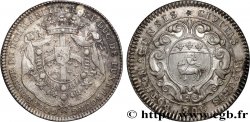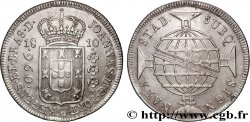bmv_862074 - AMBACIA VICVS - AMBOISE (Loir-et-Cher) Triens fourré, monétaire PATORNIVS
500.00 €(Approx. 580.00$ | 435.00£)
Quantity
Add to your cart

Type : Triens fourré, monétaire PATORNIVS
Date: (VIIe siècle)
Mint name / Town : Amboise (37)
Metal : copper
Diameter : 13,5 mm
Orientation dies : 10 h.
Weight : 0,77 g.
Rarity : R3
Coments on the condition:
Ce triens fourré (faux d’époque) est frappé sur un flan irrégulier et assez large. Surface légèrement granuleuse au revers
Catalogue references :
Predigree :
Monnaie provenant de la collection Philippe Schiesser
Obverse
Obverse legend : AMBACIA VICO.
Obverse description : Tête à l'appendice perlé à droite ; au-dessous une croisette.
Reverse
Reverse legend : PATOR - NINO M.
Reverse description : Croix ancrée à pied reposant sur un degrés bouleté.
Commentary
Faux d’époque en cuivre.
Vintage copper fake
Vintage copper fake








 Report a mistake
Report a mistake Print the page
Print the page Share my selection
Share my selection Ask a question
Ask a question Consign / sell
Consign / sell








